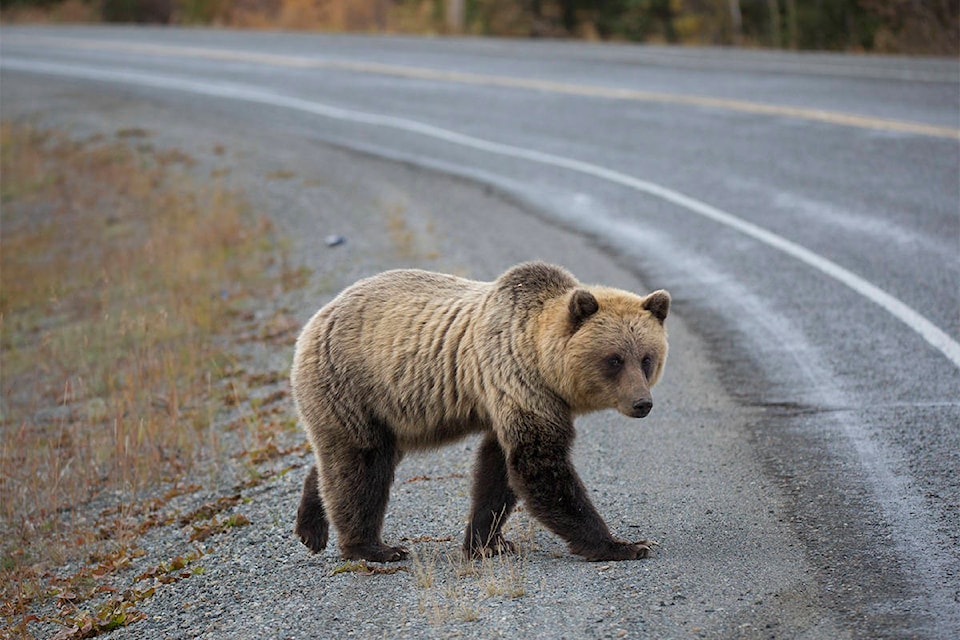A landmark report has found road development is the biggest threat to key species and habitat in the Elk Valley.
Mining and forest harvest are also putting stress on old growth forests, riparian habitat, westslope cutthroat trout, grizzly bears and bighorn sheep, according to the Elk Valley Cumulative Effects Assessment and Management Report.
It proposes a number of mitigation measures to restore and protect these elected Valued Components (VCs).
The report is the first of its kind and the result of a unique partnership between the Ktunaxa Nation Council and other stakeholders, including mining and forestry companies, environmental groups, and government.
The Elk Valley Cumulative Effects Management Framework (CEMF) Working Group was formed in 2012 in recognition of land use issues and pressures in the Elk Valley, and in response to the proposed expansion of Teck’s Line Creek coal mine between Sparwood and Elkford.
It is the only project in the province to consider potential conditions 50 years in the future, employing modern simulation technology, which draws on the knowledge of experts around the province.
“You could input Teck is expanding a mine here, CanWel is looking at doing some forestry here and the City of Fernie is looking at expanding their boundary here, you can put all these inputs in and then it spits out a map showing how it’s going to affect the different VCs,” explained Scott Beeching, Director of Planning and Development Services at the District of Elkford, and the working group’s municipal representative.
Using this technology, the group assessed the hazard risk of both natural and human-made land use changes within the Elk Valley to provide a framework that can support natural resources management decisions involving the assessment, mitigation, and management of cumulative effects.
Old growth forests, riparian habitat, westslope cutthroat trout, grizzly bears and bighorn sheep were elected VCs because of their significant social, economic, cultural, and environmental values.
The report found human activity currently impacts 15 per cent of the Elk Valley study area, which covers approximately 3568 square kilometres of the Ktunaxa’s traditional lands, from the headwaters of the Elk River downstream to Elko. However, this would increase to 27 to 31 per cent by 2065 under all future development scenarios.
The study also considered climate change and predictions that there will be less snow and annual air temperature increases of between 4-5C by 2065 with “cascading effects” on aquatic resources, wildlife and vegetation.
Old growth forests, particularly at lower elevations, are at high risk, as are westslope cutthroat trout and riparian habitat in the valley bottoms and eastern areas. The majority of riparian habitat in the Elk Valley falls under moderate risk.
Grizzly bear habitat suitability is being diminished by road development, particularly at lower elevations, while highly valued winter range for bighorn sheep are under threat, especially in the eastern areas.
“The Elk Valley’s long history of land use, primarily forestry and coal mining, has created footprints that present hazards to Valued Components, especially in unprotected and lower elevation portions of the watershed,” concludes the report.
“Of principal concern is the extensive road network and its effects on riparian areas, westslope cutthroat trout, and Grizzly bear.”
Mitigation scenarios tested by the working group suggest that deactivating roads, implementing access management, minimizing timber harvest in riparian areas, allowing for recruitment from mature to old growth forest, and minimizing or avoiding development in core sheep winter range habitat are the most important measures for improving VC conditions.
However, reducing road density and/or access in areas with high habitat potential is considered the “highest priority management action” to address cumulative effects in the Elk Valley.
Beeching said this management action is the most common but would also have the biggest impact on residents and backcountry users.
Pending approval by sponsoring agencies, the working group will submit the report to the province by the end of January. It also hopes to make the report publicly available online.
“The next phase of work, already underway, is the development of the Elk Valley CEMF Implementation Plan, which will determine focus areas for the recommendations, management actions and mitigation approaches outlined in the final report, and identify responsibilities of partner organizations,” said Taye Ayele, Co-Chair of the Elk Valley CEMF Working Group and Cumulative Effects Coordinator, Kootenay-Boundary Region, Ministry of Forests, Lands, Natural Resources Operations and Rural Development.
“There hasn’t always been available information to understand the potential impacts of decisions made on the landscape in a way that considers past, current and future development and disturbance.
“Going forward, the consideration of potential impacts due to cumulative effects using a transparent and coordinated approach outlined in the report can support balanced and informed decision-making that will hopefully minimize further impact and improve future conditions for valued components.”
